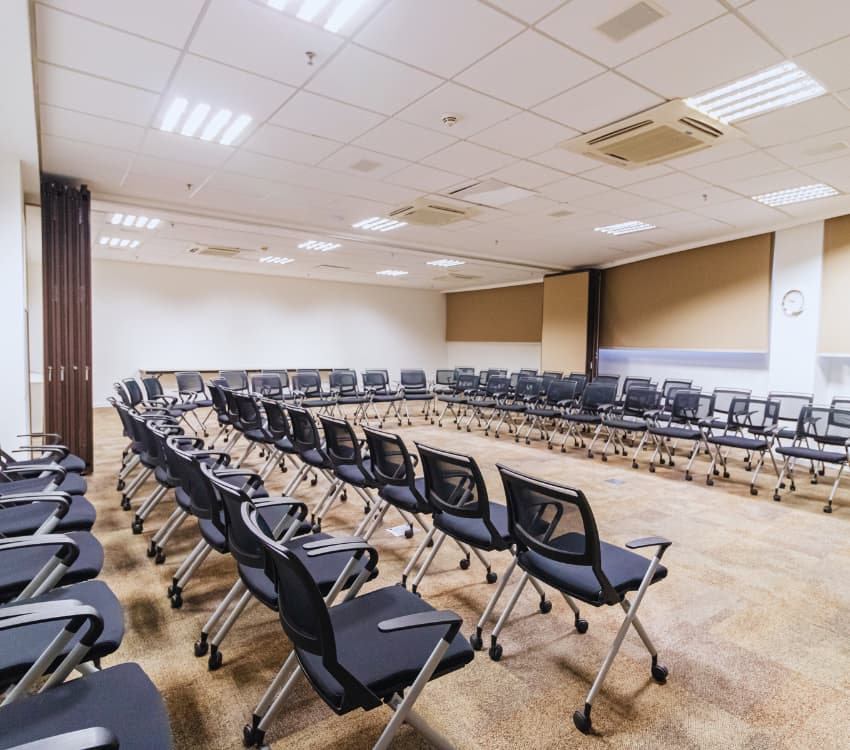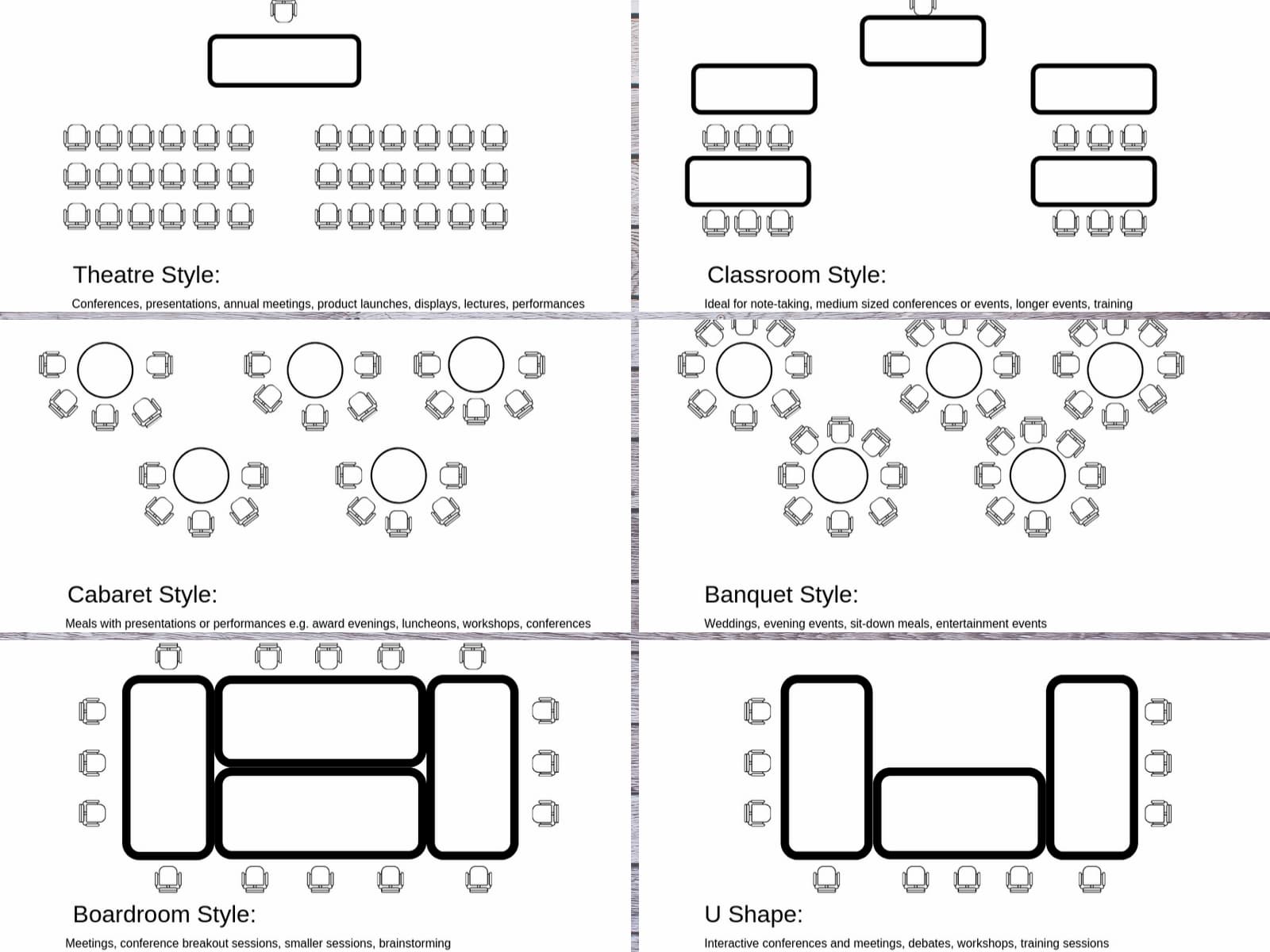A well-planned seating layout can set the tone for a successful event. Whether you are arranging a business conference, a wedding reception, or a networking evening, the room’s layout influences comfort, flow, and the overall atmosphere. At BE Furniture Sales, we work with venues and organisers to provide furniture that suits various formats, helping clients make the most of their space.
Planning the Space
Before selecting a layout, it is essential to consider the size of the venue and the expected number of guests. A good rule of thumb is to reduce the maximum capacity by around ten to fifteen per cent. This allows for more space between guests, especially during longer events.
Room dimensions, ceiling height, and natural walkways all impact the layouts possible. It is also important to account for any audiovisual equipment, staging, or catering needs. Keeping these in mind early will help prevent issues during setup.

Practical Furniture Choices
Event set-ups are physically demanding, so furniture weight and mobility matter. Aluminium banquet chairs are lighter than steel, making them easier to move and stack. This reduces the risk of strain for event staff, especially when layouts need to change quickly.
Storage trolleys are useful for efficiently transporting chairs and tables. Their wheels should be wide enough to glide smoothly over carpeted or uneven surfaces without causing damage. Selecting furniture that stacks or folds neatly helps speed up transitions between sessions or events.
-
Theatre Style
Chairs are arranged in straight rows facing a stage or focal point. This setup suits presentations, ceremonies and lectures where audience attention is focused forward. It is the most efficient for large groups but offers limited guest interaction.
-
Classroom Style
This mirrors theatre style but adds tables in front of each row. It is suitable for note-taking, laptop use, or any event requiring writing space. It is also ideal for training sessions, seminars, and educational workshops.
-
Banquet Style
Round tables seating eight to twelve guests create a social and inclusive environment. This arrangement works well for formal meals, weddings, and fundraising dinners. Guests face one another, encouraging conversation, though it is less suited for presentations.
-
Cabaret Style
Like banquet seating, this layout leaves one side of each table open, keeping guests facing forward. It offers clear views of speakers or stages while still allowing table-based interaction. It works well for conferences, awards evenings, and hybrid events.
-
Boardroom Style
Guests are seated around a single large table, typically oval or rectangular. This setting promotes focused discussion and is often used for formal meetings, dinners or high-level planning sessions.
-
U-Shape Style
Tables are arranged in a U, open at one end for a presenter or speaker. This arrangement encourages participation and is effective for small —to medium-sized groups where face-to-face interaction is important.
-
Hollow Square Style
The tables form a square with an open centre. This allows for equal status among attendees, with no defined ‘head’ of the table. It suits internal meetings, roundtable discussions, and training events.
-
Conference Style
This involves a single large conference table, suited to meetings of up to 25 people. It is efficient for group discussions or collaborative work, especially in corporate or educational environments.
-
Family-Style Seating
Long, continuous tables give a relaxed and communal feel. This format is ideal for informal gatherings, large receptions and rustic-themed events. It creates a substantial visual impact and encourages shared conversation.
-
Cocktail Style
This layout uses standing space only with scattered poseur tables. It maximises floor space and allows guests to move freely. It is suitable for receptions, networking events, and parties with finger food rather than formal dining.
-
Auditorium Style
This style, often tiered or staggered, is used for performances or talks where every attendee needs a clear view. It is less flexible but highly effective in venues with built-in stages.
Managing Assigned Seating
Assigning seats is recommended for events with over fifty guests or where catering is involved. This helps prevent confusion, allows caterers to serve the correct meals, and avoids unnecessary delays. Seating plans should be finalised once RSVPs are confirmed, giving time to prepare clear signage or name cards.
Adapting to Last-Minute Changes
Event plans can change quickly. Choosing a layout that offers flexibility will reduce stress if attendance numbers shift. Modular furniture, folding tables and stackable chairs all support quick reconfiguration. Keeping spare chairs and tables in storage allows for on-the-spot adjustments without disruption.
Bringing the Room Together
A thoughtful event layout enhances guests’ experience and makes operations smoother for organisers. Whether it is a formal dinner or a corporate workshop, the choice of seating style influences flow, comfort, and engagement. At BE Furniture Sales, we supply furniture that supports every layout, helping planners bring their vision to life with ease. With stock held in our UK warehouse and next-day delivery available, we are ready to help your next event come together seamlessly.
Related Articles
- Banqueting Tables Buying Guide
- Banqueting Chairs Buying Guide
- Guide to Crowd Control Barriers for Events, Exhibitions, Festivals
- Folding and Stacking Wooden Event Tables
- Event Planning Guide – Event Design and Event Layouts
